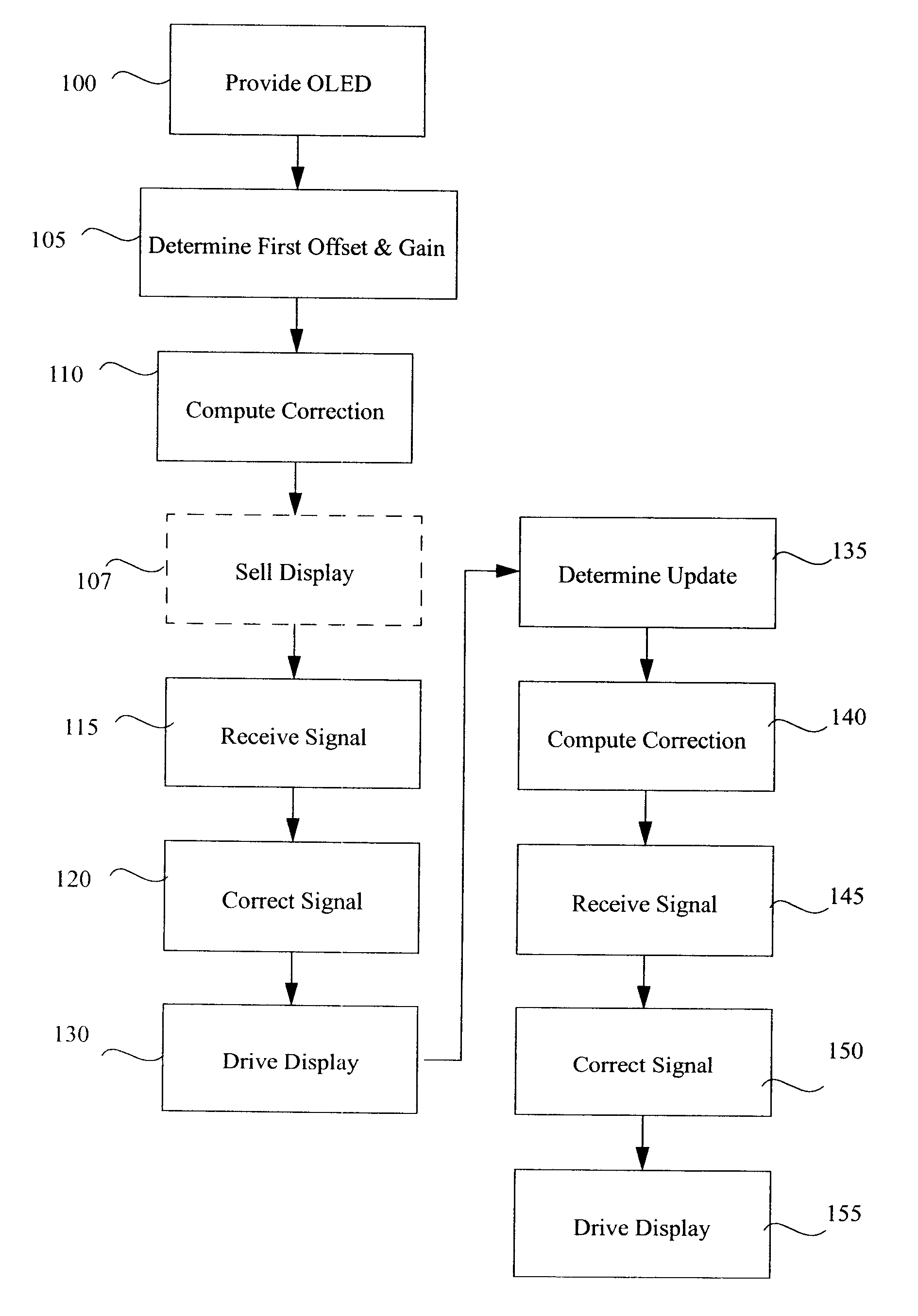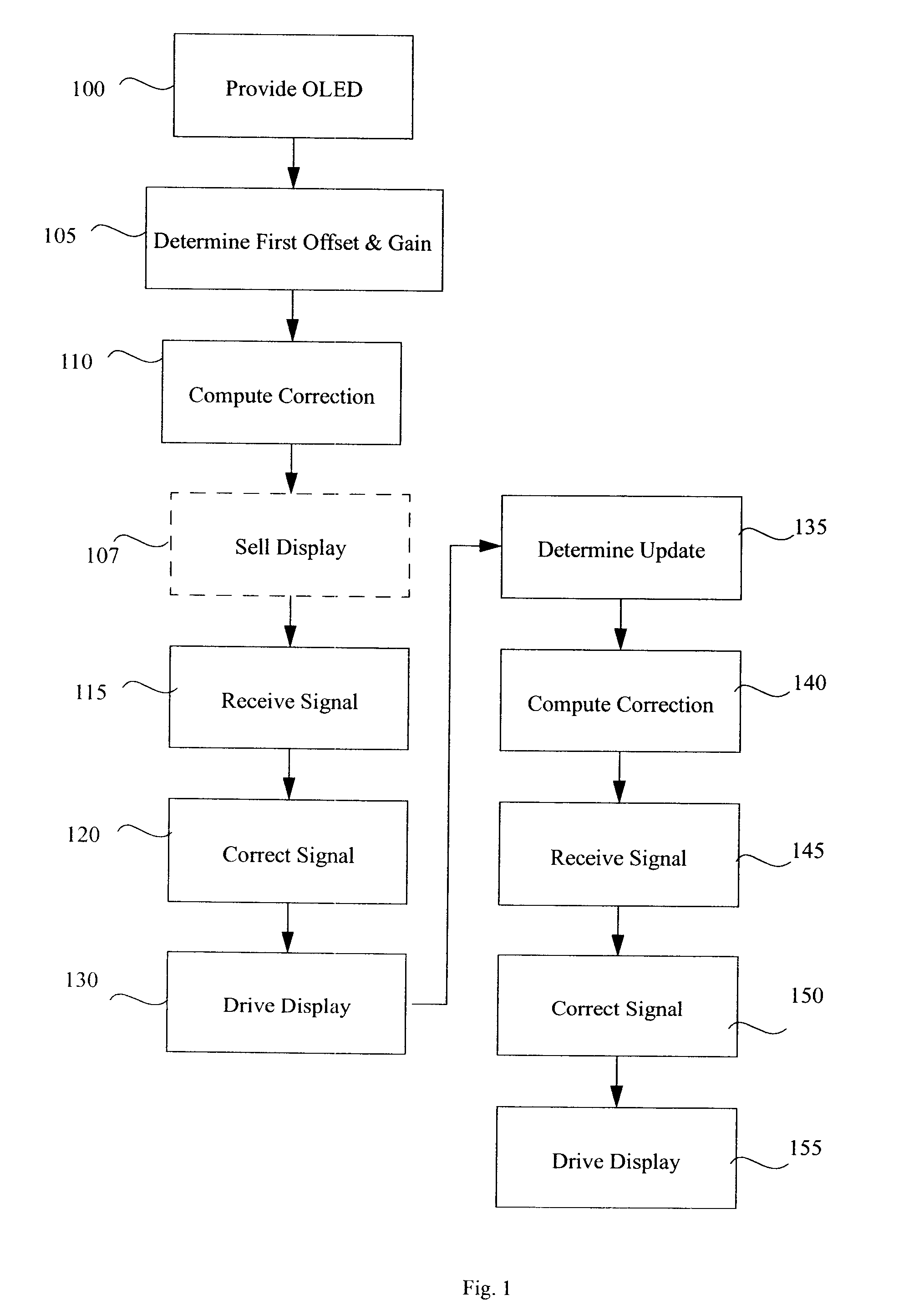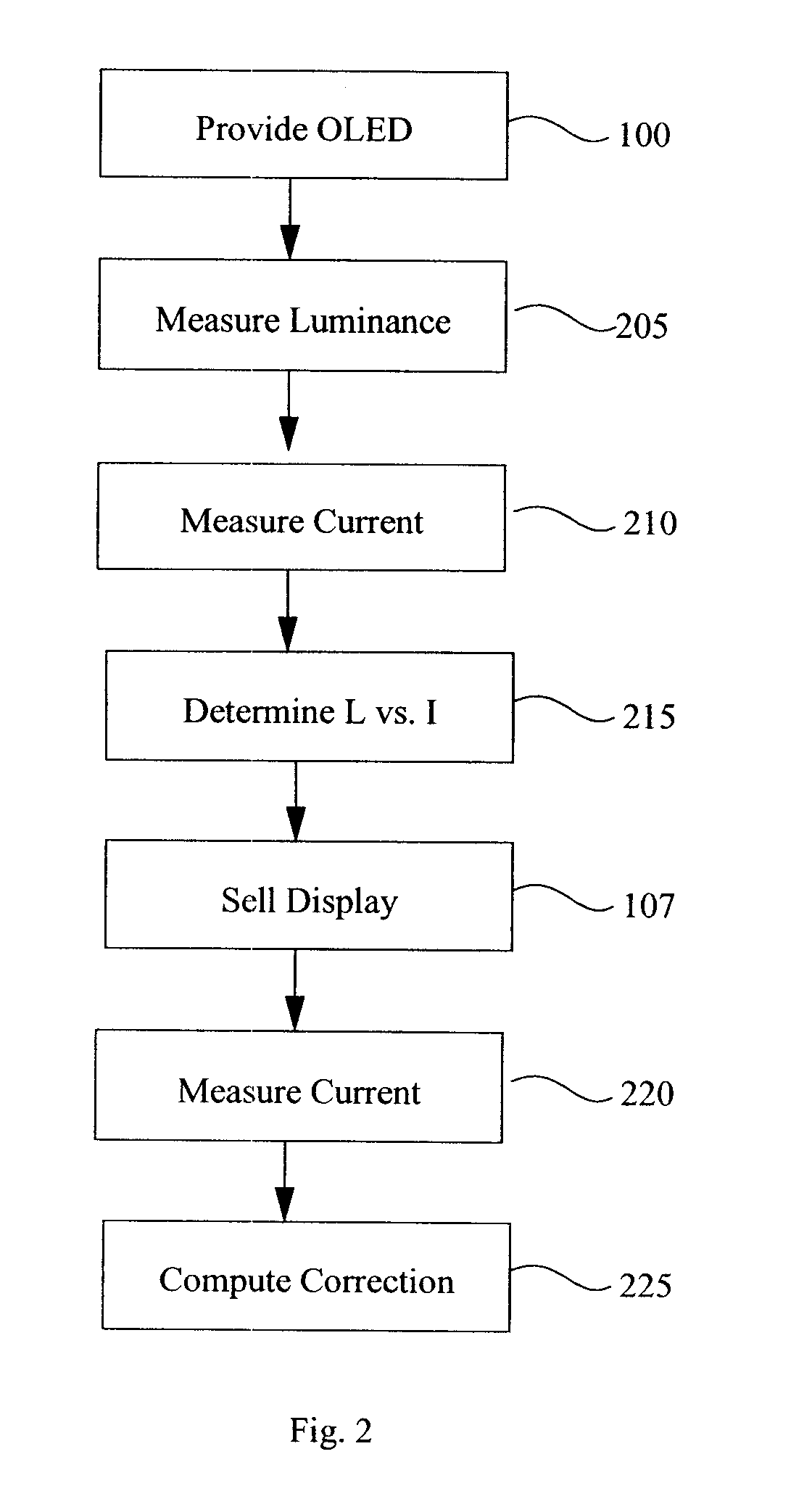Method and apparatus for averaged luminance and uniformity correction in an amoled display
a technology of luminance and amoled display, applied in the direction of instruments, static indicating devices, etc., can solve the problems of variable performance of components, long-range variability of amorphous silicon devices, and significant change of threshold voltage properties of thin-film devices, so as to improve uniformity and lifetime.
- Summary
- Abstract
- Description
- Claims
- Application Information
AI Technical Summary
Benefits of technology
Problems solved by technology
Method used
Image
Examples
Embodiment Construction
[0031]Referring to FIG. 1, a method for the correction of average luminance or luminance uniformity variations in an active-matrix OLED display comprises the steps of providing 100 an active-matrix OLED display having thin-film transistors driving one or more light-emitting elements responsive to a multi-valued input signal for causing the light-emitting elements to emit light at a plurality of brightness levels; determining 105 at a first time a first offset voltage at which at least one of the one or more light-emitting elements will not conduct more than a pre-determined minimum current and a first gain relationship between the voltage and the current passing through the at least one of the one or more light-emitting elements at voltages above the first offset voltage; receiving 115 a signal for driving the one or more light-emitting elements after determining the first offset voltage and first gain relationship, correcting the signal by employing the first offset voltage and gai...
PUM
 Login to View More
Login to View More Abstract
Description
Claims
Application Information
 Login to View More
Login to View More - R&D
- Intellectual Property
- Life Sciences
- Materials
- Tech Scout
- Unparalleled Data Quality
- Higher Quality Content
- 60% Fewer Hallucinations
Browse by: Latest US Patents, China's latest patents, Technical Efficacy Thesaurus, Application Domain, Technology Topic, Popular Technical Reports.
© 2025 PatSnap. All rights reserved.Legal|Privacy policy|Modern Slavery Act Transparency Statement|Sitemap|About US| Contact US: help@patsnap.com



